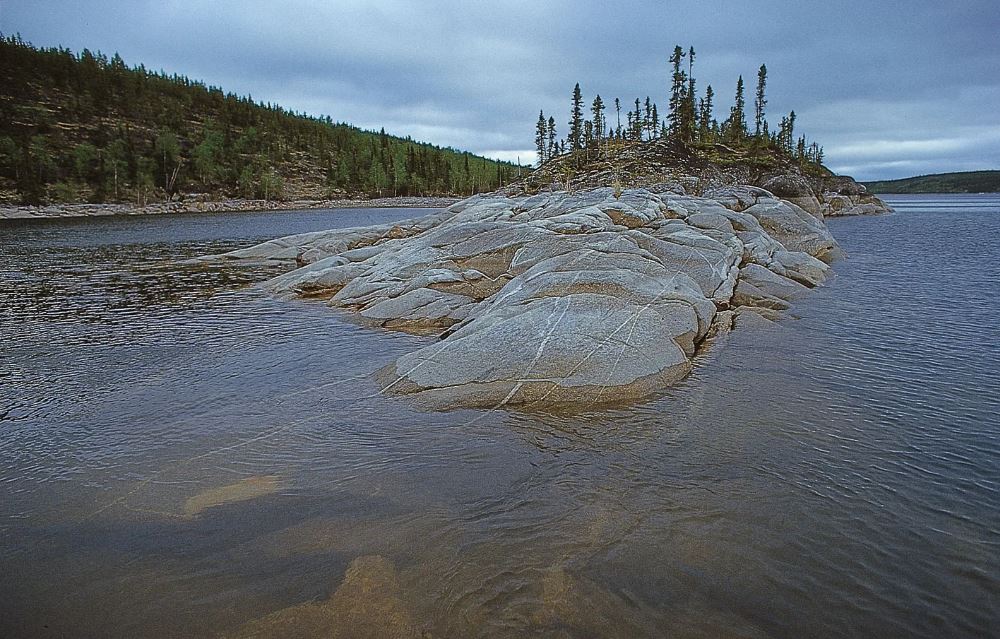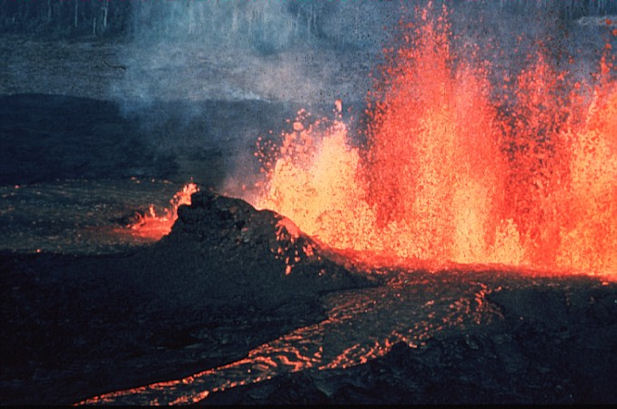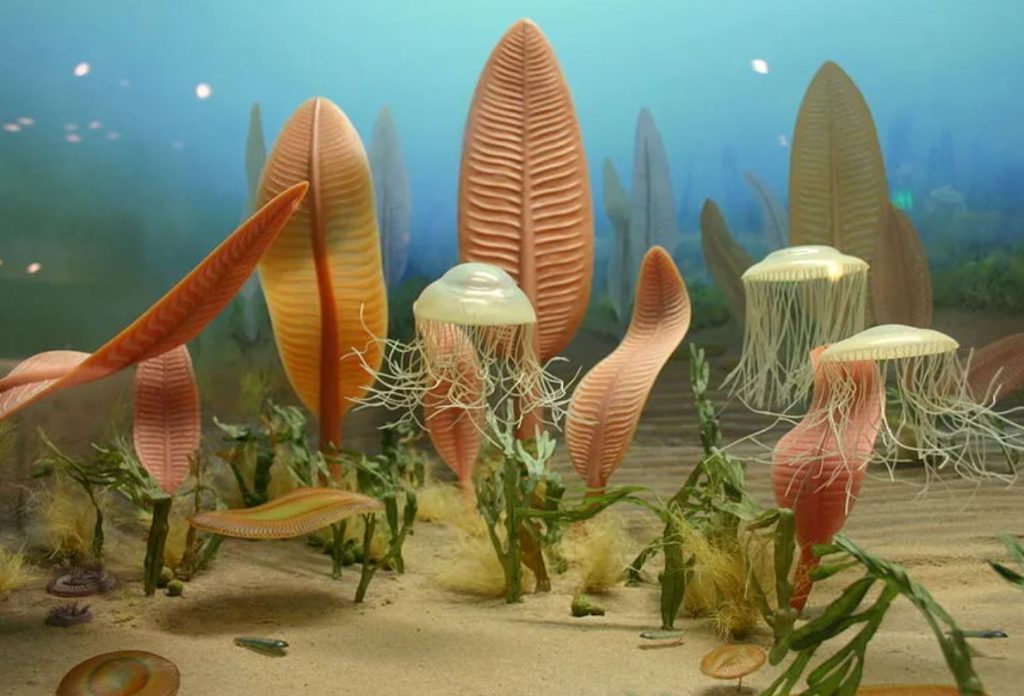The commencement of the Precambrian era coincided with the birth of our planet and witnessed significant events such as the formation of the moon, the emergence and fragmentation of supercontinents, the genesis of the first oceans, the introduction of oxygen into the atmosphere, and the appearance of life on Earth.
Delve into the realm of Precambrian knowledge and information…
Unveiling the Precambrian
The Precambrian encompasses the historical timeline of Earth from approximately 4.6 billion years ago, marking the planet’s formation, to the initiation of the Phanerozoic Eon, around 541 million years ago (mya). Remarkably, the Precambrian period accounts for about 88% of Earth’s entire history.
In the geological time scale, Earth’s history is divided into four distinct eons: the Hadean Eon, Archean Eon, Proterozoic Eon, and Phanerozoic Eon.
The term “Precambrian” refers to the period preceding the Cambrian Period, which signifies the initial period of the Phanerozoic Eon. Consequently, the Precambrian era encompasses the Hadean, Archean, and Proterozoic eons.
Initially, the Precambrian was believed to be devoid of any life forms due to the absence of visible fossils in Precambrian rock formations.

However, with the advent of micropaleontology, the study of microscopic fossils, scientists now speculate the existence of simple life forms even during the Hadean Eon, the earliest phase of the Precambrian era. By the end of the Proterozoic Eon, multicellular life had made its entrance.
A. The Hadean Eon
~4600 – 4000 Mya

The Hadean Eon commenced around 4.6 billion years ago, coinciding with the formation of Earth.
Earth, along with the other celestial bodies in our solar system, is believed to have originated from the accumulation of dust and gas remnants after the formation of the sun.
During the initial stages of the Hadean Eon, Earth’s surface was volatile and partially molten. The eon derives its name from Hades, the Greek mythological underworld.
It is speculated that early in the Hadean Eon, Earth experienced a collision with a planet approximately the size of Mars, referred to as Theia. The resulting debris from this collision is hypothesized to have coalesced to form the moon.
This explanation of the moon’s formation is known as the “Giant-Impact Hypothesis.” If accurate, it implies that the moon did not exist at the beginning of the Hadean Eon.
While very few rocks from this eon can be found on Earth, meteorites from space and moon rocks date back to the Hadean Eon.
As Earth gradually cooled, its crust solidified, giving rise to liquid water bodies and an atmosphere primarily composed of water vapor and carbon dioxide gas.
For a considerable period, scientists believed that life first emerged during the Archean Eon. However, the analysis of zircon crystals in Australia, remnants of the Earth’s oldest-known crust, revealed the presence of carbon minerals. These findings indicate the possible existence of simple living organisms during the Hadean Eon.
B. The Archean Eon
4000 – 2500 Mya

The Archean Eon is further divided into several eras:
- Eoarchean (4000 to 3600 Mya)
- Paleoarchean (3600 to 3200 Mya)
- Mesoarchean (3200 to 2800 Mya)
- Neoarchean (2800 to 2500 Mya)
Before the discovery of traces of life in zircon crystals from the Hadean Eon, it was widely believed that life originated during the Archean Eon.
The presence of primitive bacteria, blue-green algae, and other single-celled microorganisms marks the beginning of the Archean Eon. Fossil evidence of these simple life forms first appears in rocks dating back approximately 3.5 billion years. At that time, the atmosphere primarily consisted of nitrogen, with little to no free oxygen (O2). Free oxygen, in its most common form, is produced through photosynthesis.
During the Archean Eon, chains of islands and rocky plates emerged from the eruptions of active volcanoes, forming shallow seas in between. It is believed that one or more supercontinents came into existence during this eon.
The oldest-known rock formations on Earth date back to the Archean Eon.
Throughout the Archean Eon, the intensity of the sun was up to 30% less than it is today.
C. The Proterozoic Eon
2500 – 541.0 ± 1.0 Mya

The Proterozoic Eon is further divided into several eras and periods:
- Paleoproterozoic Era (2500 to 1600 Mya)
- Siderian (2500 to 2300 Mya)
- Rhyacian (2300 to 2050 Mya)
- Orosirian (2050 to 1800 Mya)
- Statherian (1800 to 1600 Mya)
- Mesoproterozoic Era (1600 to 1000 Mya)
- Calymmian (1600 to 1400 Mya)
- Ectasian (1400 to 1200 Mya)
- Stenian (1200 to 1000 Mya)
- Neoproterozoic Era (1000 to 541.0 ± 1.0 Mya)
- Tonian (1000 to ~720 Mya)
- Cryogenian (~720 to ~635 Mya)
- Ediacaran (~635 to 541.0 ± 1.0 Mya)
During the early stages of the Proterozoic Eon, volcanic islands and extensive rocky plates converged, forming the supercontinent known as Columbia.
Over time, Columbia disintegrated, and its fragments reassembled to form the supercontinent Rodinia.
During a significant portion of the Proterozoic Eon, Earth experienced extreme coldness, resulting in widespread glaciation. Many scientists theorize that near the end of the Proterozoic Eon, the entire surface of the Earth may have been encased in ice, a concept known as “Snowball Earth.”
The Paleoproterozoic Era, the first era of the Proterozoic Eon, witnessed the Great Oxidation Event. This event led to a substantial increase in oxygen levels in Earth’s atmosphere and oceans. Consequently, various forms of organisms were able to flourish and thrive.
Throughout the Proterozoic Eon, single-celled life forms continued to evolve. It was during the Ediacaran Period, the final period of the Proterozoic Eon, that the first multicellular organisms made their appearance.
One notable fossil from the Ediacaran Period is Rangia, a multicellular organism with leaf-like fronds that resided on the seafloor. Rangia, along with other characteristic organisms of that period such as the slug-like Kimberella, collectively form the Ediacaran biota.
By the end of the Proterozoic Eon, the atmosphere had become enriched with free oxygen. This set the stage for the Cambrian Explosion, a remarkable event marking the rapid and diverse proliferation of life forms at the onset of the Paleozoic Era.
The Precambrian era, spanning billions of years, holds invaluable insights into the early history and development of our planet. From the formation of Earth and the moon to the emergence of life in its simplest forms, the Precambrian era paved the way for the vibrant and complex ecosystems that would later flourish in the subsequent geological periods.
As we continue to explore and unravel the mysteries of our planet’s past, the Precambrian era stands as a testament to the remarkable journey of Earth and the awe-inspiring forces that shaped it.